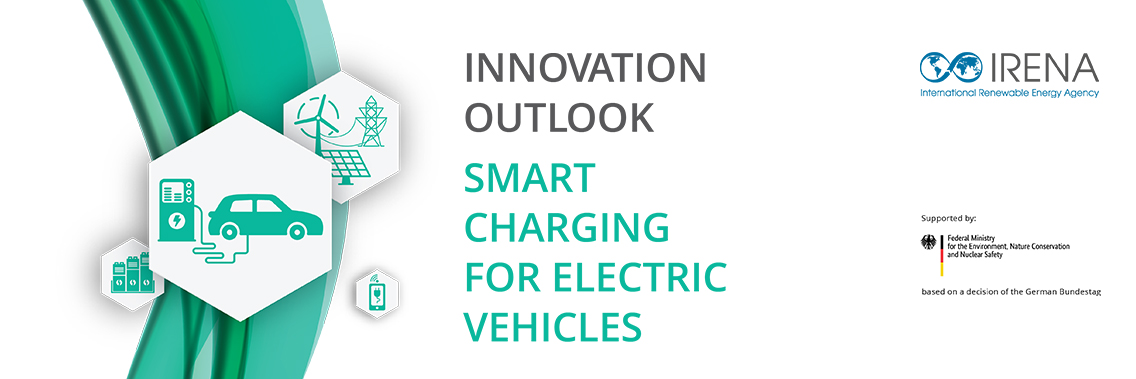Today the average car runs on fossil fuels, but growing pressure for climate action, falling battery costs, and concerns about air pollution in cities, has given life to the once “over-priced” and neglected electric vehicle.
With many new electric vehicles (EV) now out-performing their fossil-powered counterparts’ capabilities on the road, energy planners are looking to bring innovation to the garage — 95% of a car’s time is spent parked. The result is that with careful planning and the right infrastructure in place, parked and plugged-in EVs could be the battery banks of the future, stabilising electric grids powered by wind and solar energy.
Looking at real examples, a new report from IRENA, Innovation Outlook: smart charging for electric vehicles, guides countries on how to exploit the complementarity potential between renewable electricity and EVs. It provides a guideline for policymakers on implementing an energy transition strategy that makes the most out of EVs.
Smart charging means adapting the charging cycle of EVs to both the conditions of the power system and the needs of vehicle users.
“Smart charging is one of the innovations IRENA is closely following that presents multiple benefits. By decreasing EV-charging-stress on the grid, smart charging can make electricity systems more flexible for renewable energy integration, and provides a low-carbon electricity option to address the transport sector, all while meeting mobility needs,” says Dolf Gielen, Director of IRENA’s Innovation and Technology Centre.
While EVs have a lot to offer towards accelerating variable renewable energy deployment, their uptake also brings technical challenges that need to be overcome.
To learn more about smart charging, read IRENA’s Innovation Outlook: smart charging for electric vehicles. The report explores the degree of complementarity potential between variable renewable energy sources and EVs, and considers how this potential could be tapped through smart charging between now and mid-century, and the possible impact of the expected mobility disruptions in the coming two to three decades.
Original source: IRENA
Published on 14 May 2019

